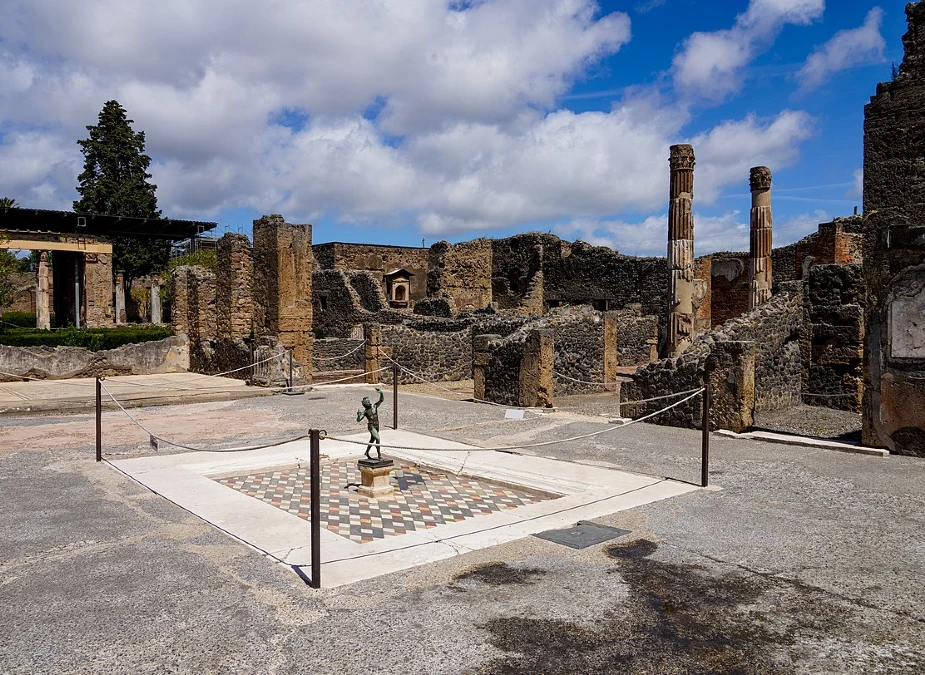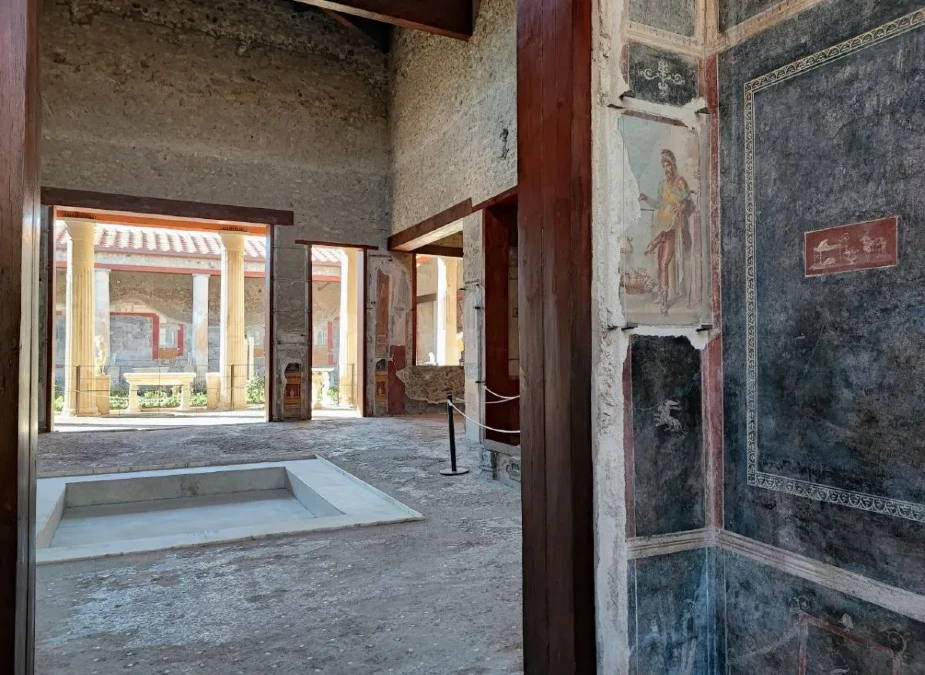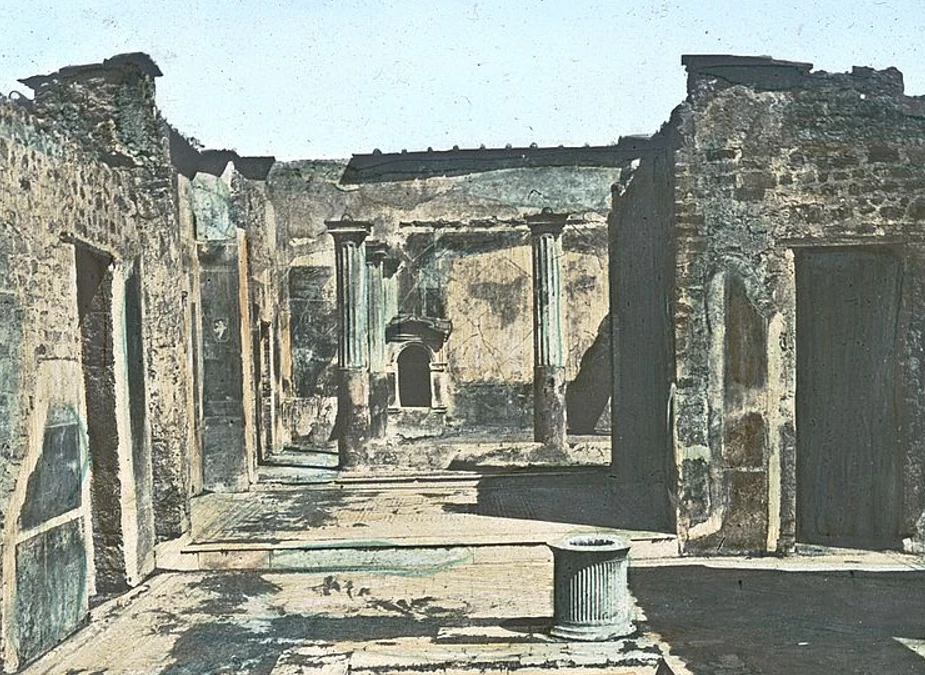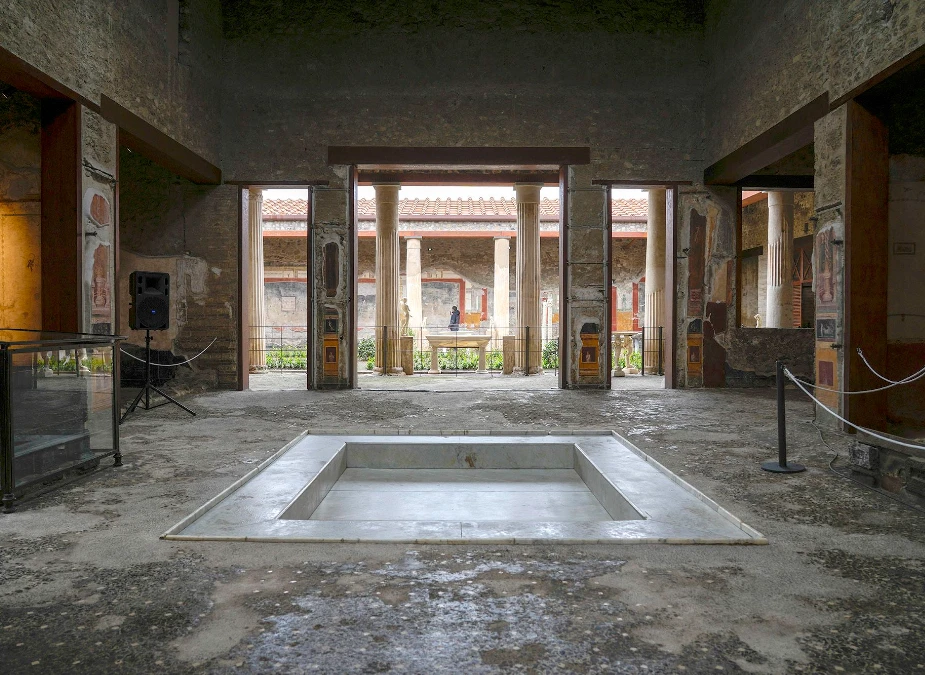Pompeii houses are the residential buildings in the ancient city of Pompeii that were buried by the eruption of Mount Vesuvius in 79 AD.
These houses provide a glimpse into ancient Roman architecture and daily life.
There, you can see houses of varied sizes and complexity, reflecting their inhabitants’ social status and wealth.
Pompeii has every kind of house, from modest dwellings to large and magnificent villas to simple workmen’s houses and merchants’ homes with their workshops.
In this article, we will learn about the popular houses of Pompeii, including the Houses of Faun, Vetii, Villa of Mysteries and many more.
About Pompeii Houses
- Location/Address: 80045 Pompeii, NA, Italy
- Official name: Pompeii Houses
- Timings: Daily, 9 am to 7 pm
- How to Reach: Circumvesuviana train, Bus 5001, Car or Taxi Learn More→
- Tickets Cost: €30
How to Visit Pompeii Houses?
Booking Pompeii tickets, which are available on-site or online, allows you to easily visit all the Pompeii houses.
While you can buy tickets on-site, booking online is recommended for convenience and to avoid long queues.
There are just three simple steps to book the tickets online:
1. Go to the Booking page
2. Select the date, time and number of tickets
3. Complete the secure payment process and receive your tickets.
After booking, you can arrive at the Pompeii Ruins and visit each house individually.
If you want to know which popular Pompeii houses are a must-visit, keep reading the names mentioned below!
What are the Popular Pompeii Houses?
Some of the most popular Pompeii houses include:
1. Villa of the Mysteries

Address: Via Villa dei Misteri, 2, 80045 Pompei NA, Italy
Built around the 2nd century BC, the Villa of Mysteries is one of the most popular Pompeii houses.
The villa has a complex architectural design and precious pictorial decorations.
Located on the outskirts of Pompeii City, it is known for its grand appearance and magnificent frescoes.
These frescoes, particularly those in the triclinium or dining room, depict many scenes believed to represent a religious initiation ceremony.
Despite the loss of certain furnishings and ornaments due to the earthquake of 62 AD, the villa’s splendid appearance remains recognizable today.
Learn More>>
2. House of Faun

Address: House of Faun, Via Villa dei Misteri, 2, 80045 Pompei NA, Italy
The House of the Faun, or Casa del Fauno, is a grand Hellenistic palace in Pompeii.
Covering over 3,000 square meters, it was constructed in the 2nd century BC during the Samnite period.
It was owned by a wealthy family who lived a luxurious lifestyle.
The house occupies an entire city block and features two impressive colonnaded gardens, one Ionic and the other Doric.
It is known for its opulent design and also has a main atrium with an exact copy of the famous statue of the dancing faun, which contributes to its name.
The House of Faun also contains many notable artworks, including the Alexander Mosaic, depicting the Battle of Issus, and floor mosaics portraying Nilotic scenes and theatrical masks.
It also housed storefront shops, a private bath system, and sophisticated living quarters.
3. House of Vetti

Address: Vicolo dei Vetti, 80045 Pompei SA, Italy
The House of the Vettii is another beautiful and interesting residence in Pompeii, providing a precious record of Pompeian painting.
This house belonged to Aulus Vettius Restitutus and Aulus Vettius Conviva and was named after them.
Upon entering, visitors will see a fresco of Priapus, symbolizing fertility and warding off evil.
Next, it has an atrium decorated with scenes of Cupids and Psyche. The rooms of the atrium feature paintings of mythological scenes
Other rooms also display precious Fourth Style frescoes with paintings of Daedalus and Pasiphae, with Ixion being tortured.
The triclinium is famous for its vibrant red-background paintings depicting popular characters such as Perseus and Andromeda, Ariadne and Dionysus, Daphne and Apollo, and Neptune and Amymone.
The servants’ quarters and kitchen provide insights into domestic life.
Most of the house’s dazzling Fourth Style frescoes were executed after the earthquake of 62 AD.
4. House of the Tragic Poet

Address: Vicolo Della Fullonica, 80045 Pompei NA, Italy
Another popular Pompeii house is the House of the Tragic Poet, which derives its name from a mosaic scene depicting a “Master of the Theatre.”
This luxurious and refined house, dating back to the imperial age, has many finely decorated rooms with stunning architectural designs.
The house also has workshops, which suggests that the owner was involved in commerce.
You will see the characteristic “cave canem” (beware of the dog) mosaic, one of Pompeii’s best-known images.
The “tragic poet” depicted in the tablinium has given the house its name.
It contains many popular paintings of mythological figures, such as Theseus and Ariadne and Venus and Cupids.
Other rooms, particularly the cubicula, also have a notable fresco showing the “Sacrifice of Iphigenia,” which is now housed in the Archaeological Museum in Naples.
Some experts have identified the artwork as a copy of a work by the famous Greek painter Timanthes of the 5th century BC.
5. House of Venus in the Shell
Address: Via dell’Abbondanza, 80045 Pompei NA, Italy
The House of the Venus in a Shell was the residence of a well-to-do family.
There is a large fresco depicting “Venus in a Sea Shell” on the garden wall. It depicts the goddess navigating the waves in a shell, accompanied by cupids.
Additionally, there is a depiction of the god “Mars with weapons” on one side.
The house also contains many rooms with fine paintings, including a fresco depicting “doves, fountains, and flowers.
6. House of Menander
Address: Via Villa dei Misteri, 80045 Pompei NA, Italy
The House of Menander is one of the city’s largest and most elegant houses, known for its rich decorations and complex layout.
It belonged to the Poppei family and has undergone various building phases since the 3rd century BC.
The house was named after a portrait of the Greek playwright Menander.
It is also called the “House of the Silverware” due to the discovery of 118 pieces of silver, gold, and coins in a chest in the cellars.
As you enter the house, you will see two pillars with Corinthian capitals leading to a Tuscan-style atrium.
The atrium features decorations in the Fourth Style, a charming little temple in one corner, and an intact wooden roof that allows light and collects rainwater.
The rooms to the left of the entrance are decorated with paintings depicting scenes from the Iliad. Beyond the tablinium, there is a peristyle with a beautifully painted colonnade.
The kitchen and bathroom areas are on the right side. The triclinium, flanked by two rooms with frescoed walls, is on the left.
Servant quarters also feature refined paintings of mythological scenes, theatrical masks, and the portrait of Menander.
It is surely one of the must-visit houses in Pompeii.
7. House of the Small and Large Fountain
The House of the Small Fountain and the House of the Large Fountain are the two popular Pompeii Houses renowned for their fountains.
These fountains are absolute masterpieces of mosaic art.
The House of the Large Fountain features a colorful mosaic with a bronze statue and theatrical masks.
It is made of glass paste stones, rare examples of non-floor mosaics.
The House of the Small Fountain has a notable pictorial decoration with small pictures inspired by the landscape.
Other Houses in Pompeii

In addition to these famous houses, many other homes in Pompeii are beautiful and have extraordinary features.
Some such houses include the House of the Cryptoporticus, known for its underground corridor, or Cryptoporticus, with beautifully preserved frescoes.
The House of the Centenary was named to commemorate the 100th anniversary of the excavation of Pompeii.
The House of the Golden Cupids is famous for its frescoes depicting golden cupids, which adorn the walls of the triclinium.
The Villa of Diomedes is a large suburban villa outside the city walls. It includes extensive gardens, impressive colonnades, and luxurious living quarters.
FAQs
1. How many houses are in Pompeii?
The Pompeii archaeological site has approximately 1,500 buildings, of which nearly 500 are people’s houses.
It includes modest homes, grand villas and more.
2. What was the richest house in Pompeii?
The House of the Faun is considered one of the wealthiest and most luxurious houses in Pompeii.
It is known for its grand design and extensive collection of artworks, including the famous Alexander Mosaic.
3. What is the most famous villa in Pompeii?
The Villa of the Mysteries is one of Pompeii’s most famous villas. It is renowned for its elaborate frescoes depicting a religious initiation ceremony.
4. Which houses in Pompeii are opened
Several houses in Pompeii are open to visitors, including the House of the Faun, the House of the Vettii, the Villa of the Mysteries, the House of the Tragic Poet, the House of Venus in the Shell, and the House of Menander.
Besides these, several other Pompeii houses are open to visitors.
5. What are the houses like in Pompeii?
The houses in Pompeii range in various types based on the family’s social status.
It contains everything from modest dwellings to large and luxurious villas with intricate frescoes, mosaics, and other artworks that showcase the residents’ tastes and lifestyles.
6. What is the most intact house in Pompeii?
The House of the Vettii is often regarded as one of the most intact houses in Pompeii.
Despite being buried under volcanic ash for centuries, it retains much of its original structure, architectural elements, and intricate frescoes.
Other highly intact houses in Pompeii include the House of the Faun and the House of Menander.
Featured Image:




